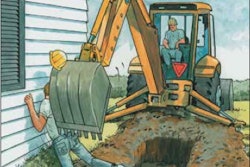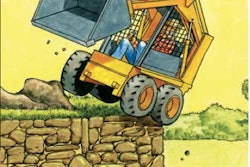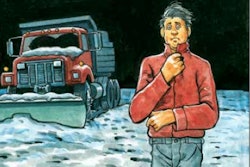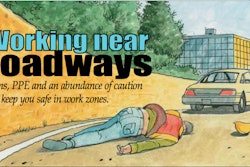
He carefully traced the edges of a fish pond. While he was spraying around the pool, the wind picked up, sending a chemical mist into the water and onto the worker. A pool contractor treated the water at the landscaping company’s expense. The company also had to replace the client’s goldfish, which died after rain washed pesticide into the pond. The worker suffered several days of skin irritation.
What the expert says: When applying pesticides, read the label for the buffer distance, often 5 to 10 feet, warns Kyle Miller, senior technical specialist for BASF Professional Turf & Ornamentals. The product’s label discloses the precise distance.
Because pesticides are designed to kill insects, weeds and fungi, they can pose a hazard to many living organisms, according to the U.S. EPA. Reading the label before using a pesticide is vital to ensuring the safety of yourself, others and the environment. Miller says you should do this in a setting where you can give the information full attention.
“Don’t get out into the field and then read it,” he says. “You’re not going to be able to focus. You’re going to be in a get-the- job-done mode.”
Each pesticide label contains a box telling you what personal protective equipment is required. This can include a respirator and certain types of rubber gloves. Miller says you should get in the habit of wearing fundamental protective gear – eye protection, rubber gloves, long sleeves (or rubber gloves that cover arms) and pants – when working around any chemical.
Chemical names often sound the same – another reason reading the label is important. Landscape workers have sprayed lawns with chemicals they thought were insecticides, but turned out to be herbicides that killed the lawn.
Storing pesticides in unlabeled or improperly labeled containers is against the law. Miller says this can happen because companies buy chemicals in large (10- to 15-gallon) containers that are cheaper than multiple smaller ones, but aren’t as practical for transporting. Their solution could be buying several small containers of the product and reusing them. Federal OSHA requires your employer to provide a manufacturer label for every chemical you encounter, and product labels indicate requirements for reusing or refilling containers.
Wash your hands at the end of each job. You can do this with waterless soap or a jug of water and soap your employer should provide. Since you might touch your face, food, a vehicle steering wheel and other equipment between jobsites, this minimizes exposure. After work, shower and wash work clothes separately from others.
If you work with a truck equipped with a tank, pump and hoses for applying chemicals, don’t park it near water or storm drains. Inspect all equipment before each use and keep spare parts such as clamps and hoses on hand. Every vehicle that carries pesticides should have a spill kit on board.










